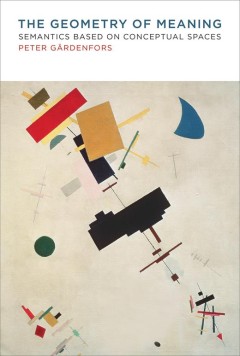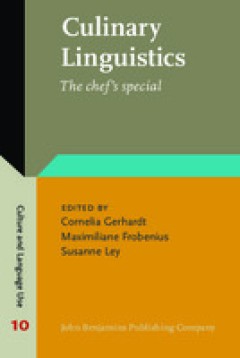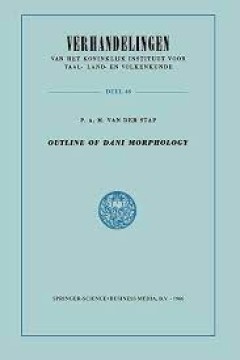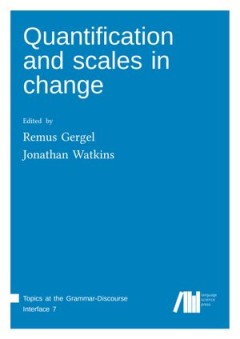Filter by

Words without meaning
"A Bradford book."According to the received view of linguistic communication, the primary function of language is to enable speakers to reveal the propositional contents of their thoughts to hearers. Speakers are able to do this because they share with their hearers an understanding of the meanings of words. Christopher Gauker rejects this conception of language, arguing that it rests on an unt…
- Edition
- -
- ISBN/ISSN
- 9780262273596
- Collation
- 1 online resource (xi, 299 pages).
- Series Title
- -
- Call Number
- -

Type-Logical Syntax
A novel logic-based framework for representing the syntax–semantics interface of natural language, applicable to a range of phenomena. In this book, Yusuke Kubota and Robert Levine propose a type-logical version of categorial grammar as a viable alternative model of natural language syntax and semantics. They show that this novel logic-based framework is applicable to a range of phenomena�…
- Edition
- Ed. 1
- ISBN/ISSN
- 9780262360807
- Collation
- -
- Series Title
- -
- Call Number
- 412 KUB t

Quotations as Pictures
The proposal of a semantics for quotations using explanatory notions drawn from philosophical theories of pictures. In Quotations as Pictures, Josef Stern develops a semantics for quotations using explanatory notions drawn from philosophical theories of pictures. He offers the first sustained analysis of the practice of quotation proper, as opposed to mentioning. Unlike other accounts that t…
- Edition
- Ed. 1
- ISBN/ISSN
- 9780262367356
- Collation
- -
- Series Title
- -
- Call Number
- 412 STE q

Verb Sense Discovery in Mandarin Chinese—A Corpus based Knowledge-Intensive…
This book applies linguistic analysis to the poetry of Emeritus Professor Edwin Thumboo, a Singaporean poet and leading figure in Commonwealth literature. The work explores how the poet combines grammar and metaphor to create meaning, making the reader aware of the linguistic resources developed by Thumboo as the basis for his unique technique. The author approaches the poems from a function…
- Edition
- -
- ISBN/ISSN
- 978-3-662-44556-3
- Collation
- -
- Series Title
- -
- Call Number
- -

The Geometry of Meaning: Semantics Based on Conceptual Spaces
A novel cognitive theory of semantics that proposes that the meanings of words can be described in terms of geometric structures. In The Geometry of Meaning, Peter Gärdenfors proposes a theory of semantics that bridges cognitive science and linguistics and shows how theories of cognitive processes, in particular concept formation, can be exploited in a general semantic model. He argues that…
- Edition
- -
- ISBN/ISSN
- 9780262319584
- Collation
- -
- Series Title
- -
- Call Number
- 400 GAR t

Culinary Linguistics: The Chef's Special
Language and food are universal to humankind. Language accomplishes more than a pure exchange of information, and food caters for more than mere subsistence. Both represent crucial sites for socialization, identity construction, and the everyday fabrication and perception of the world as a meaningful, orderly place. This volume contains an introduction to the study of food and an extensive over…
- Edition
- -
- ISBN/ISSN
- 9789027202932
- Collation
- -
- Series Title
- -
- Call Number
- -

The evolution of grounded spatial language
This book presents groundbreaking robotic experiments on how and why spatial language evolves. It provides detailed explanations of the origins of spatial conceptualization strategies, spatial categories, landmark systems and spatial grammar by tracing the interplay of environmental conditions, communicative and cognitive pressures. The experiments discussed in this book go far beyond previous …
- Edition
- -
- ISBN/ISSN
- 9783944675466
- Collation
- -
- Series Title
- -
- Call Number
- -

The SenticNet Sentiment Lexicon: Exploring Semantic Richness in Multi-Word Co…
The research and its outcomes presented in this book, is about lexicon-based sentiment analysis. It uses single-, and multi-word concepts from the SenticNet sentiment lexicon as the source of sentiment information for the purpose of sentiment classification. In 6 chapters the book sheds light on the comparison of sentiment classification accuracy between single-word and multi-word concepts, …
- Edition
- -
- ISBN/ISSN
- 978-3-319-38971-4
- Collation
- -
- Series Title
- -
- Call Number
- -

Quantification and scales in change
This volume contains thematic papers on semantic change which emerged from the second edition of Formal Diachronic Semantics held at Saarland University. Its authorship ranges from established scholars in the field of language change to advanced PhD students whose contributions have equally qualified and have been selected after a two-step peer-review process. The key foci are variablity and di…
- Edition
- -
- ISBN/ISSN
- 9783961102655
- Collation
- -
- Series Title
- Topics at the Grammar-Discourse Interface 7
- Call Number
- 401.43 QUA
 Computer Science, Information & General Works
Computer Science, Information & General Works  Philosophy & Psychology
Philosophy & Psychology  Religion
Religion  Social Sciences
Social Sciences  Language
Language  Pure Science
Pure Science  Applied Sciences
Applied Sciences  Art & Recreation
Art & Recreation  Literature
Literature  History & Geography
History & Geography